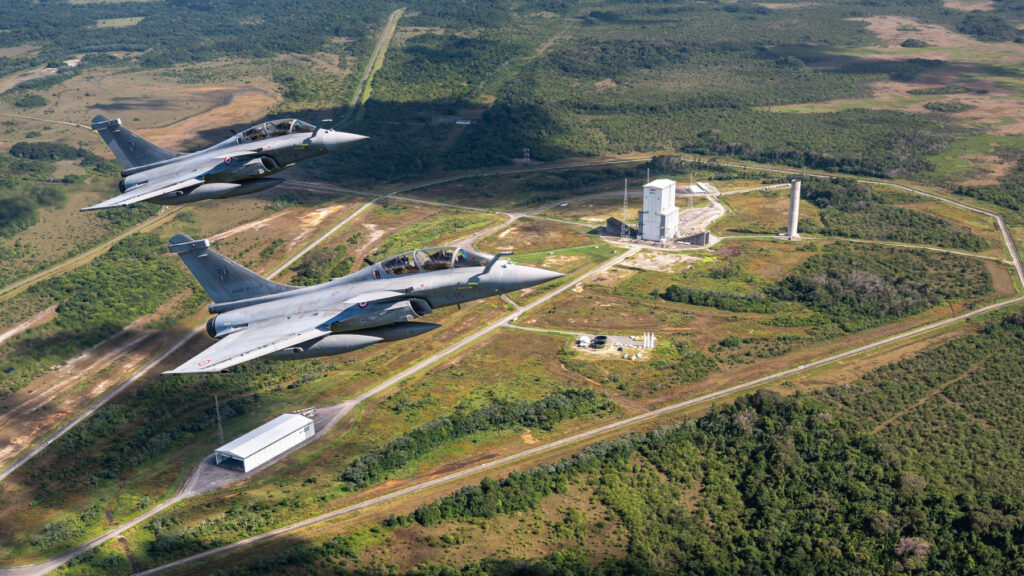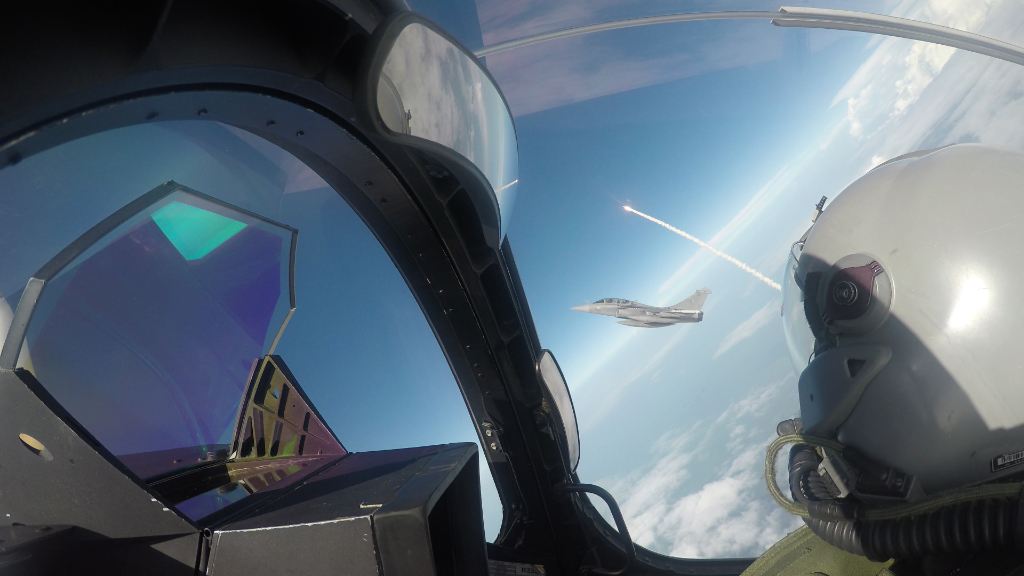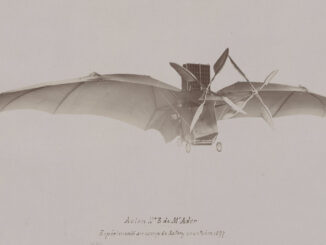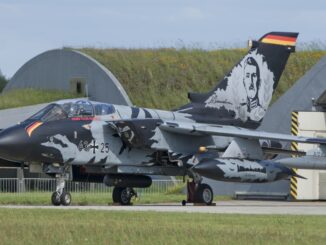 On 9th July 2024, Ariane 6 expendable launch system made its maiden flight from ELA-4 launch pad at the Guiana Space Centre in Kourou, French Guiana. The launch, considered a milestone of the European space exploration, was protected by a special aviation deployment of Armée de l’air et de l’espace (the French Air and Space Force).
On 9th July 2024, Ariane 6 expendable launch system made its maiden flight from ELA-4 launch pad at the Guiana Space Centre in Kourou, French Guiana. The launch, considered a milestone of the European space exploration, was protected by a special aviation deployment of Armée de l’air et de l’espace (the French Air and Space Force).
The Ariane 6 is the newest addition to Ariane launch vehicle family, a European project of expendable vehicles used for launching payloads in space. Development of the Ariane project began in the early 1970s and the first launch of Ariane 1 took place in December of 1979.
Works on the latest variant of the European launch vehicle system began as early as in 2012. After a long and complicated development, the first production batch of fourteen Ariane 6 was finally ordered in 2019.
The Ariane 6 was built by Ariane Group within a public-private partnership, on behalf of the European Space Agency which covered the majority of the funding. The system was developed in two variants, A62 for medium-lift and A64 for heavy-lift launch vehicle.
The A64 is capable of lifting up to 21,650 kg of payload to low Earth orbit (LEO), up to 11,500 kg into geostationary transfer orbit (GTO) and up to 15,500 kg into sun-synchronous orbit (SSO). The A62 has approximately half of the aforementioned capability, respectively.
The Ariane 6 is considered the strategic project of ESA as well as a flagship of French and European space industry. The newest launch vehicle allows Europe to join the heavy-lift club, currently including only two operational vehicles, Long March 5 from China and Proton-M from Russia. Although there are a few more launch vehicles developed for the heavy-lift launch capability – such as Angara A5 (Russia), Falcon Heavy and Vulcan Centaur (USA) – none of them has yet made a launch with payload exceeding 7,000 kg.
Importance of the Ariane 6 project was reflected in the security measures. Similarly to other variants of the Ariane launch vehicle, the newest one was launched from Centre Spatial Guyanais (Guiana Space Centre – CSG), often called the Europe´s Spaceport. In order to constantly protect the launch site, permanent operation codenamed Titan is carried out by Forces armées en Guyane (the French Armed Forces in Guiana – FAG).

Within that operation, approximately fifty French soldiers are stationing at the spaceport throughout the year. That force increases up to 400 personnel during delivery of the launch vehicle and its payload, as well as during rehearsals. Usually, the troops are deployed by 3e Régiment étranger d’infanterie (3rd Foreign Infantry Regiment) from Kourou, French Guiana. Additional assistance is also being provided by the French Navy and its maritime surveillance vessels.
That permanent protection system includes dispositif particulier de sûreté aérienne (special aviation security system – DPSA) and consist of Fennec and Puma helicopters of the 68th Transport Squadron ´Antilles-Guyane´, based in Cayenne. The DPSA is responsible for creating an aerial protection bubble, to protect the spaceport from any unauthorised and malicious activities.
During the initial launch of the Ariane 6, the DPSA was reinforced by three Dassault Rafale fighters of 4e escadre de chasse (4th Fighter Wing) from Saint-Dizier.
The three French fighters reached Guiana on 1st July, after a more than 7,000-kilometre-long journey from France that took about nine hours. The Rafales were accompanied by Airbus A330 Phénix MRTT (multi-role tanker aircraft) which additionally carried on board the ground crews and other support personnel.
On 9th July 2024, at 16:00 local time (21:00 CET), the Ariane 6 was successfully launched into space. The vehicle carried multiple satellites to LEO and its flight was split into three phases to demonstrate various capabilities of the new European launch system. However, an anomaly occurred during the final stage of the flight, resulting in failure to perform the deorbit operation.
During the initial stage of its launch, the Ariane 6 was escorted by the Rafale fighters.

All photos © Armée de l’air et de l’espace. Information from the press releases of the French Ministry of Defence – published on the MoD page on 5th and 10th July – were used, in accordance to the etalab-2.0 licence.



